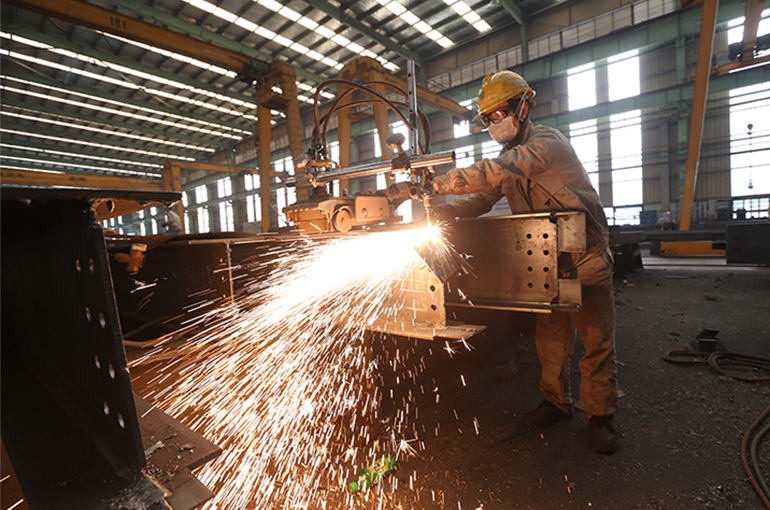 China Renews Push for Steel Sector to Go Green
China Renews Push for Steel Sector to Go Green(Yicai) Aug. 12 -- China will accelerate the eco-friendly transformation of industries, and in particular the steel and non-ferrous sector, promote the upgrading of technological processes, as well as further develop the carbon emissions trading market, according to a document released by the country’s cabinet yesterday.
The Ministry of Ecology and Environment is organizing carbon emission accounting guidelines, verification requirements, and various technical specifications for quotas in the steel industry, Yicai learned. In the second half, the steel sector will also be obliged to carry out carbon emission data submissions and monthly records.
Now that the European Union has passed legislation on the carbon emission adjustment mechanism, carbon tariffs will soon be imposed on steel products exported to the EU with ultra-intensive emissions, said Li Yiren, deputy general manager of Chinese steel producer HBIS Group.
It is therefore essential for Chinese steel producers to learn the rules of the national carbon market as soon as possible, set up professional teams and incorporate internal carbon reduction management into their daily agenda, Li said.
China’s carbon emissions market, which began trading in 2021, mainly involves the power sector, but this could be extended to key emitting industries such as steel, cement and aluminum smelting in the future, Huang Runqiu, Minister of Ecology and Environment, said in July.
Several Chinese iron and steel companies, including Baowu Steel Group, are pouring funds into the research and development of low-carbon technologies, according to Yicai research.
Replacing carbon with hydrogen in blast furnaces is an important way of reducing carbon emissions and is also one of the solutions to carbon neutrality in the future, Baowu Chairman Hu Wangming said previously.
Baowu is exploring the commercialization of a hydrogen-rich-carbon-cycle oxygen blast furnace, called HyCROF, which can cut emissions by around 30 percent, he said. The Shanghai-based firm is also using more green electricity. Combined with the technology of carbon capture, utilization, and storage, the company will eventually achieve carbon neutrality in the blast furnace smelting.
More than 50 low-carbon metallurgical technology research and development projects by steel mills such as Anshan Iron and Steel Group, Shougang Group, Jianlong Group, and Jiuquan Steel, are underway. And 110 iron and steel companies have announced plans for ultra-low emission transformation, involving more than half of the country’s output, and have completed evaluation and monitoring.
China plans to finish its ultra-low emission retrofit program by 2025, which will account for 80 percent of its existing steel production capacity.
Editor: Kim Taylor